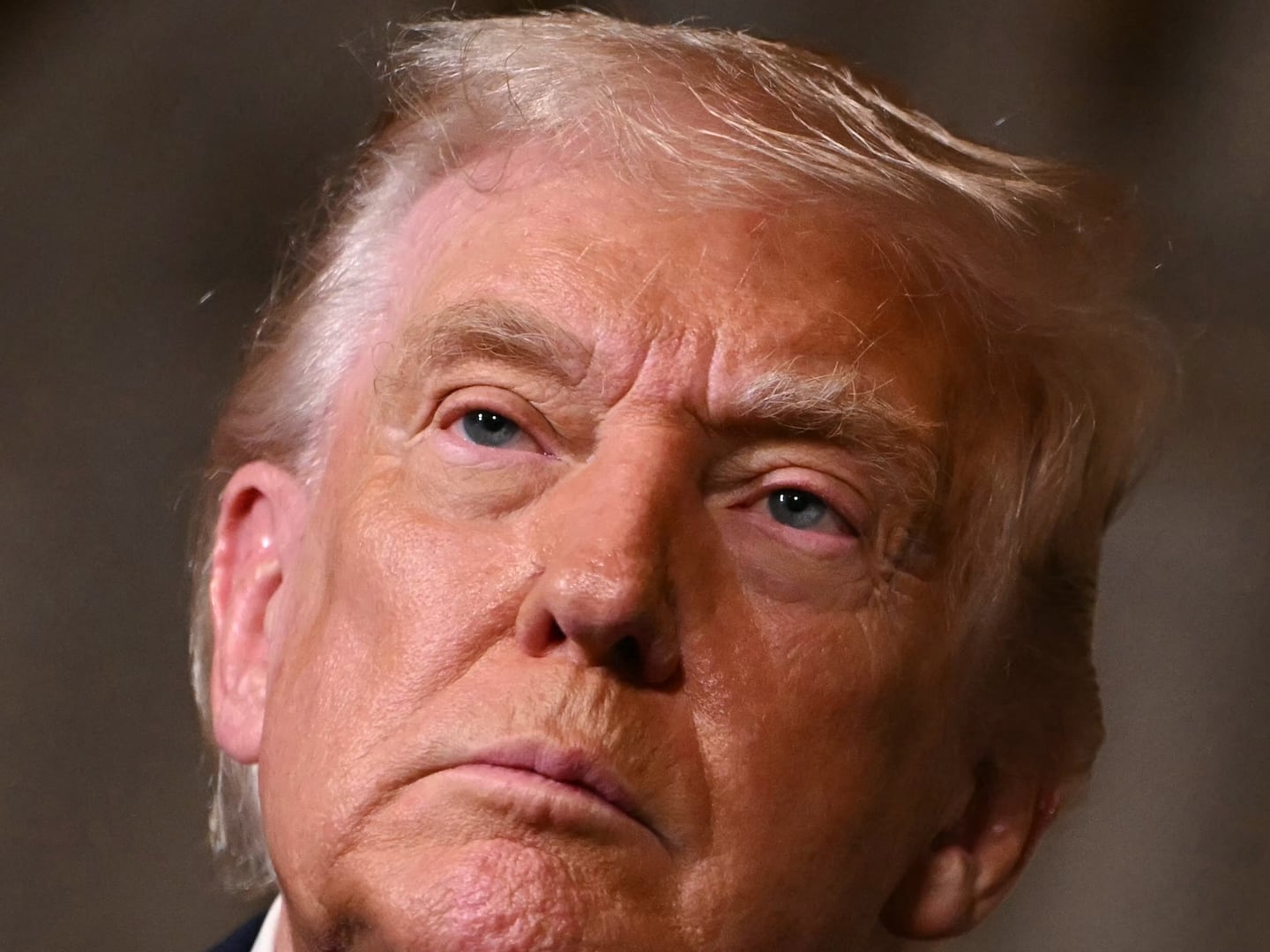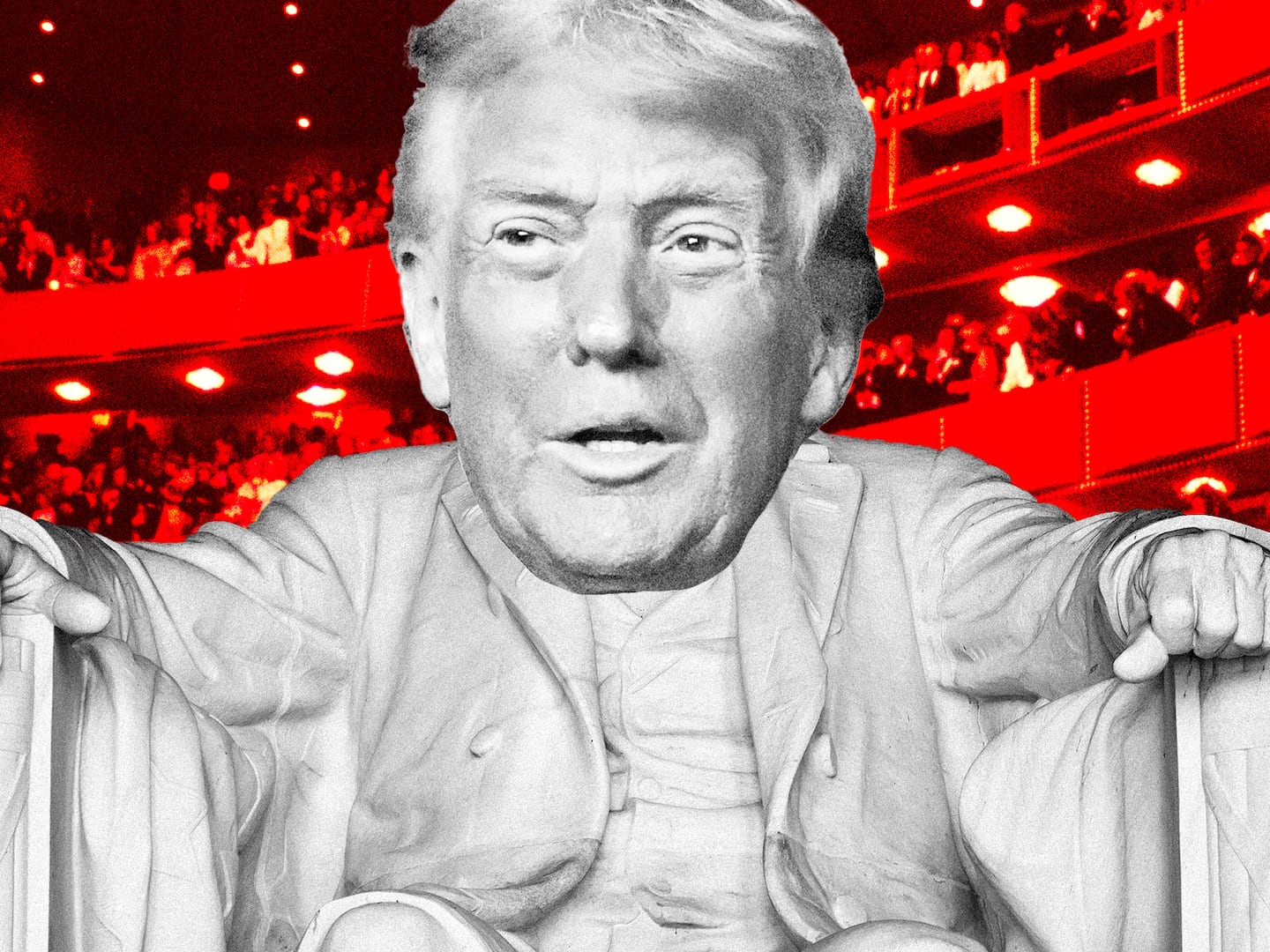
What would we do without the Tea Party? For well over a year, this rollicking muster of citizens—mocked and feared in equal measure by the Democrats and, indeed, by many Republicans—have offered more than just whizz-bang political entertainment. Starting out as a loose-knit posse of loudly disaffected conservatives, the movement has become better organized and improbably daring; in fact, it is now a full-blown political uprising. As we gird our national loins for the mid-term elections in November, here is a brisk primer on the movement.
A is for anger, the jet-fuel of a movement that Nancy Pelosi, in a rare moment of wit, pooh-poohed as Astroturf (i.e., not grassroots). Tell that to Sharron Angle, the Republican Senate nominee seeking to unseat Pelosi’s confrere, Harry Reid. She is the archetypal Tea Party insurgent: she checks all the ideological boxes, but would you have her home to dinner with the kids?
B is for Glenn Beck and Andrew Breitbart, the two gaudiest Tea Partiers in the American media, and for Scott Brown, the Massachusetts senator whose astonishing election to Ted Kennedy’s seat in February was the earliest indication that the Tea Party amounted to more than just a rabble of birthers (although it does, to be sure, have in its ranks more than a few who believe that the president’s birth-certificate is an immaculate deception).
C is for caricatures, which deride the tea-partiers as any or all of the following: racists, homophobes, Nazis, fascists, misanthropes, polygamists, Bible-thumpers, rubes and rednecks.
D is for the demographics that suggest that some of this abuse is a tad unfair: 56% of Tea Partiers have an income that’s higher than the national average; and 37% have graduate or postgraduate degrees. “Don’t Tread On Me” is the movement’s edgy slogan, and Jim DeMint, the ideologically narcissist South Carolina senator, its frisky mascot.
E is for the two things that get every Tea Partier’s blood pressure up: elites and the establishment. The former are, in the movement’s telling, a bunch of unpatriotic, snobbish pantywaists who tend to reside on the East or the West coast; the latter is the source of all political evil, to wit, bailouts, deficits, and the like.
F is for the movement’s sturdiest pillar, Fox News, which hasn’t so much covered the Tea Party as sponsored it, its blustering anchors making sure that the uprising never lacks for air-time. Another pillar is Freedom Works, Dick Armey’s outfit, which has given the movement some of its organizational coherence and respectability—and handy sums of money.
G is for Government, which can never be small enough for a Tea Partier, and Tim Geithner, Lord North to Obama’s King George in the eyes of the movement many of whose members believe (erroneously) that the Treasury Secretary has links to the diabolical Goldman Sachs. (Tea partiers’ loathing for Big Government is matched only by their detestation of Wall Street.)
H is for health-care reform (aka ObamaCare), the most potent single issue that makes Tea Partiers see red—in every figurative sense. Thank God, then, for Friedrich Hayek, whose ideas animate the Tea Party—whether all of its members know it or not. Certainly, at the more cerebral end of the movement, the Austrian economist is a patron saint.
I is for Islam and illegal immigration, subjects that are, for Tea Partiers, an endless source of hyperventilation. Both are regarded as existential threats to America, and bring out the uglier face of the movement, whether it be in reaction to mosques near Ground Zero or Mexicans in Arizona.
J is for John Galt, the protagonist of “Atlas Shrugged,” of whom there is little bit in every Tea Partier.
K is for the Koch brothers, billionaire sugar daddies who sweeten our Tea, self-appointed saviors of an America imperiled—as they see it—by the ideas of Karl Marx. (Ninety-two per cent of Tea Partiers believe that the president’s policies are moving the country toward socialism.)
L is for liberals, from whom the country must be taken back, and for libertarians, some of whom are in the ranks of the Tea Party, though not as many as you’d think. (Those in the ranks are likely to have been unamused by demands made by Tea Party bigwigs that the mosque near Ground Zero be stopped by an exercise of eminent domain).
M is for Muslim, which a fifth of all Americans believe the president to be, and which view is particularly prevalent among supporters of the Tea Party. M is also for Lisa Murkowski, the Tea Party’s biggest scalp, and for Joe Miller, the blue-collar Yalie who scalped her in the Alaska Senate primary. And let’s not forget Mama Grizzlies, the latest and most feisty species of wildlife in the American political jungle.
N is for the 9-12 Project, Glenn Beck’s self-important excursion into Burkean territory. Its aim is to get America’s Little Platoons to kick some liberal derriere, and to propagate 9 “principles” (e.g., “America is good”) and 12 “values” (e.g., honesty, sincerity, hard work) that few among us would argue against.
O is for Obama, the gift that keeps on giving. Without Obama we’d have had no Tea Party, for whom he is the font of all that ails America, the source of all stagnation, the epicenter of all things execrable—which is why we need… Christine O’Donnell, the Tea Party’s bizarre pinup girl from Delaware who has just won the Republican nomination for Joe Biden’s seat, and will, in all likelihood, cost her party that same seat in November.
P is for Palin, primaries and political purity. Sarah Palin has reigned over the Tea Party like an ideological empress, dictating the course of numerous Republican primaries by giving her imprimatur only to those candidates who meet the terms of her political checklist. Did you vote for bailouts? Thwack. Cap-and-trade? Pow. Without doubt the most charismatic politician on the right, she is also the most polarizing figure in American politics (yes, even more so than Obama).
Q is for quo, status: “The status quo has got to go” (a sign at a Tea Party rally).
R is for the Republican Party, which has been upended spectacularly by the Tea Party and its momentum, and for Karl Rove, who is used to telling these people what to do, but to whom these people no longer pay attention. They’d rather listen to Ron & Rand (Paul), new icons for a post- RINO era. R is also for race: Critics of the Tea Party insist that the movement’s opposition to Obama is motivated primarily by the fact that he is black. (The NAACP has even censured the Tea Party for “racism.”) No one, to date, has made the charge stick irrefutably—which makes no difference, of course, to those people who believe it.
S is for Rick Santelli, economist-in-chief of the Tea Partiers, the mouth on the CNBC floor whose diatribe against the Homeowners Affordability and Stability Plan (“subsidizing losers’ mortgages”) is often credited with kick-starting the protest movement.
T is for teabagger, the scornful put-down of Tea Partiers deployed most often by the movement’s liberal opponents, as in this segment from Bill Maher. In spite of its faintly sophomoric whiff (Tea hee!), the word has the ability to drive Tea Party members—and in particular, Fox News anchors—into a state of high indignation. (Memo to Fox: Lighten up!)
U is for Tea Party-inspired upsets, of which we’ve seen several in the Republican primaries. The piquant question is whether these winners in closed primaries are unelectable in a general election featuring voters other than party-base ideologues.
V is for vehemence, which the Tea Party movement has in abundance. Will it, one wonders, translate into votes—a more precious commodity in any election.
W is for Washington, a political Gomorrah teeming with smug politicians, venal lobbyists, government employees, and spendthrift bureaucrats. There are few words more distasteful than “Washington” for the righteous Tea Partier, offering us the splendid paradox of a movement of self-identified patriots using their own nation’s capital as a term of abuse.
X is for the x-chromosome, which, with the eye-catching exception of Lisa Murkowski, would appear to be a sine qua non for getting the endorsement of patriot-feminist Palin. (It is hard to find too many male-versus-female primaries in which Palin pitched for the man.)
Y is for young, which Tea Partiers are not. A New York Times poll found that 75% of Tea Partiers are over 45, 29% over 64, and only 7% under 30 years of age. One thing the movement’s members tend to have in common, irrespective of age, is a petit-bourgeois fondness for yard signs. My favorite: “Remember, November 2, 2010: Take Out The Garbage.”
Z is for the zeitgeist, which in our unhappy nation at present happens to mean, alas—on both left and right— zero tolerance for views with which we disagree.
Tunku Varadarajan is a national affairs correspondent and writer at large for The Daily Beast. He is also the Virginia Hobbs Carpenter Fellow in Journalism at Stanford's Hoover Institution and a professor at NYU's Stern Business School. He is a former assistant managing editor at The Wall Street Journal. (Follow him on Twitter here.)






